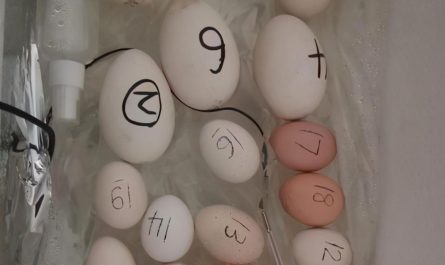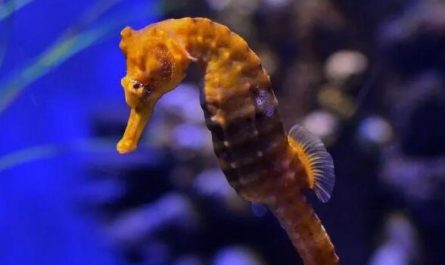Is immortality the pursuit of the living body? We don’t know the behavior of animals, but as far as humans are concerned, even if they cannot live forever, longevity is very necessary, such as living another 500 years?
But that is just a luxury, because no matter how long a person lives, he will die. For example, the official record of the world’s longest life record is the French woman Yana Kalmante, who lived 122 years and 164 days, and is the only person who has lived to be 120 years old so far! But there is a question, why do people die?
What exactly controls the lifespan of organisms?
In 1961, Leonardo Hayflick, an anatomist at the Weststar Institute in Philadelphia, Pennsylvania, did an experiment. He divided the cells sampled from human fetuses by 40-60 under the in vitro culture mode. After that, the cell population has entered the senescence stage!
Taking the renewal frequency of human cells as about 2.5 years, it is speculated that the life span of human beings is about 100-150 years old. So what exactly controls the number of cell divisions? In the 1970s, Soviet biologist Alexey Matveyevich Olovnikov (Alexey Matveyevich Olovnikov) proposed that the loss of the chromosome end sequence can cause the cell to exit the proliferation cycle. This chromosome end sequence was later changed It is called telomere, it will gradually lose its length in the process of cell division and replication, and finally the telomere disappears, cell division stops and enters the senescence phase!
So is there a technique to keep the length of the telomere constant or increase it? Of course, in 1985, Greider and other scientists discovered that telomerase is a miraculous thing, which can increase the length of telomeres. From a theoretical point of view, we only need to “fuel” the telomeres to keep the cells youthful, but In fact, the practical effect of telomerase developed by scientists in the laboratory is not good, or even ineffective. Until now, no breakthrough has been made!
So is there a kind of telomerase that can keep cells immortal?
Really, everyone of Hela cells should have heard that cervical cancer cells obtained from an African-American woman named Herita Larks in 1951 can divide all the time. From the beginning of the acquisition to the NCBI in 2011 A published paper in, shows that HeLa cells have been bred for 18,000 generations, with a total of more than 50 million tons!
You read that right, this is a cancer cell. The magical telomerase in this cell can keep the cancer cell infinitely vigorous, but you find that it does not. This infinite multiplication is the cancer cell, so life gives you the last support. It is to destroy you before you become a monster. This is the essence of life continuation!
Death: the true meaning of life evolution
The highest meaning of life is not eternal life, but death! The earth’s environment has changed drastically. From the anaerobic environment of the primitive earth to the aerobic environment, the snowy earth, the warm and humid earth, to the high-temperature earth, and then into the snowy earth, the earth’s environment has been changing. May always adapt to the environment.
So the simplest strategy for life is to weed out the life that is not suitable for the environment. Those who can survive the new environment are the kingly way! What terminates life is not the number of copies of one’s own cells, nor the length of telomeres, but the natural environment, because in the initial stage of life, it is copied infinitely!
How did the era of infinite life end?
From 3.8 billion years ago when the first life was born on the earth to about 1.2 billion years ago, all life is “infinite life”. Their form is the simplest DNA replication, and they can always replicate themselves, unlimited times! But development has been very slow in these billions of years:
3.5 billion years ago, it took more than 500-800 million years from Archaean prokaryotes to the development of photosynthesis.
2.5 billion years ago, it took more than 1 billion years from primitive photosynthesis to the use of oxygen and organic matter to produce energy
1.85 billion years ago, complex multicellular organisms appeared, and it took more than 700 million years
1.2 billion years ago, sexual reproduction appeared and it took 300 million years
660 million years ago: the emergence of multicellular animals
540 million years ago, Cambrian life exploded
It took more than 500 million years from the ancient creatures of the Cambrian era of the explosion of life to the occupation of civilization by mankind. Life is accelerating, and there are more and more species, and it has developed to the modern earth at the birth of life. In an extremely complex ecosystem, a very critical watershed is sexual reproduction, which appeared 1.2 billion years ago!
Early life is the simplest form of DNA replication. It has a very low probability of error. For example, the probability of human DNA replication error is 1/1/10^9. This probability is too low. For a stable species like humans Saying it is definitely a good thing, otherwise there will be mutations everywhere, isn’t this person about to become a monster? But for ancient life, it is obviously a bad thing, because no mutation means immutability, so after billions of years of life, they are still a kind of existence that is difficult to detect with the naked eye.
However, sexual reproduction has obviously changed this method. Its emergence allows more opportunities for change to enter the process of birth of life. In a complex environment, more mutants appear to adapt to the environment, so life has entered a rapid In the era of rotation, a large number of lives that did not adapt to the environment have fallen in this era of great change.
Only a very small part of those survived. These lives are highly adaptable and have very tenacious vitality. Although the number is greatly reduced compared with the eliminated lives, they are much more than the previous era of asexual reproduction. The era of life is truly full of flowers. it has started!
With the advent of the age of sex, is the infinite life really over?
There are at least two “infinite life” areas on the earth, one is Pandora in the Fish Lake National Forest in south-central Utah, the other is the 2200-acre Armillaria auscultum in Oregon, the former is Male Seismic Poplar that can reproduce asexually, the latter is a fungus.
Pan Duolin was formed by asexual reproduction after a male poplar that fell here about 80,000 years ago, after rooting and germinating. It covers a large area of 43.6 hectares of poplar forest. From the point of view of life, they are a whole. 8 Ten thousand years ago, it has continued to the present, but it is now dying because of pests and diseases, because of the single DNA, and even more because of the elk’s gnawing on the seedlings.
And Armillaria osmanii has become a public hazard, because they will mold the roots of plants and eventually die, so tourists in this area are strictly forbidden to enter to prevent the spores of Armillaria osmanii from being brought where they should not be! But for such asexually reproducing fungi, once a breakthrough is found, it will be simple to deal with them.
This is how the Big Mac banana became extinct in the 1950s. It is said that this banana is comparable to ice cream, while modern bananas are only rationed for shoes. According to the early 20th century, a Panamanian species of Fusarium oxysporum specifically infects them, so it is globally spread. Almost disappeared, only a small area is still planted with plantains, but it is no longer able to form a climate!
Asexual reproduction can occupy the world and even live forever! But they will be terminated by nature. For all existing sexual reproduction methods to extend the life of offspring, we should be grateful for the mutation that occurred 1.2 billion years ago, which gives life a real meaning.






